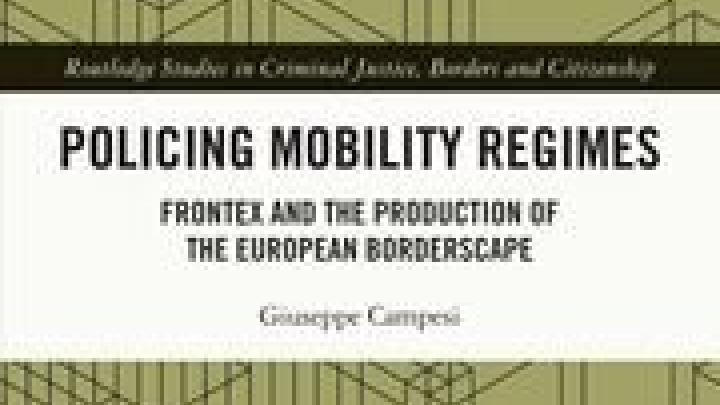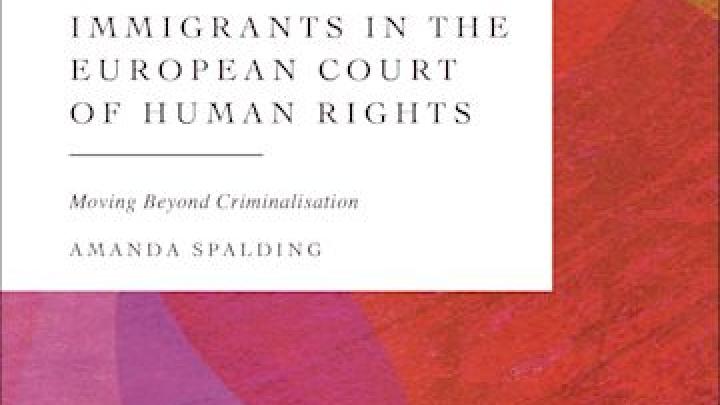Book Review: Human Rights, Refugee Protest and Immigration Detention
Posted
Time to read
Guest post by Sophie Hinger, Doctoral teaching and research fellow with the Department of Geography and the Institute of Migration Research and Intercultural Studies at Osnabrück University. Her current research concerns the local production of asylum in a mid-sized German city. She is interested in negotiations and conflicts around (forced) migration between various institutional, individual and collective actors and the meaning of spatial constructions in these negotiations.
Review of Human Rights, Refugee Protest and Immigration Detention by Lucy Fiske (Palgrave Macmillan, 2016)

Fiske's book is a vivid description of immigration detention centres as sites of degrading daily routines, but also of protest. She seeks to better understand the meaning of immigration detention and protests against it for human rights. The starting point for her exploration are the experiences and narratives of former detainees of Australian detention centres, who were involved in protest actions.
Fiske conducted in-depth interviews with fifteen men from different countries after they were released from detention. They had been detained from seven months up to six years in different detention centres. Taken together the men experienced all Australian detention centres operating between 1999-2005.
By putting the voices of former detainees, involved in protests against their detention, at the heart of her book, Fiske paints a different picture than the dominant representation of refugees and asylum seekers as either helpless victims or criminals. She presents her interviewees above all as human beings who try to retain their humanity in detention by protesting.
In line with an Arendtian understanding of human rights and the experiences of her interviewees, Fiske describes immigration detention as a loss of humanity. She cites the use of dehumanizing categories (bureaucratic language and figures) to identify 'what' a person is rather than 'who' she is and other acts of non-recognition as a denial of opportunity for detainees to reveal their unique self and to enter the public sphere as persons.
Throughout the book, Fiske echoes Hannah Arendt's observation that criminals have more rights than asylum seekers and other noncitizens, because the former can still claim their rights as members of a political community, while the latter are stripped of the very "right to have rights". As non-members of the state, their human rights are not guaranteed.
This however does not mean that asylum seekers are powerless, not even in immigration detention. They engage in multiple forms of resistance against their detention. As Fiske contends on the basis of a Foucauldian understanding of power, the relation between the state and asylum seekers is always marked by struggle, power, and resistance.
Fiske describes the acts of resistance against immigration detention as ‘mobile and transitory’ (p.53) and she explores different practices as acts of resistance, including escape, hunger strike, lip sewing, self-harm, and riot. Even compliance may be understood as an act of resistance, according to Fiske, if employed as a strategy to achieve some tangible outcome.
Tangible functions of protest can include concrete material changes in detention, but also changes in the politics of and the public discourse on immigration detention. Besides this, Fiske contends that protest also has vital existential functions for the detainees, in the sense that it is a way for them to experience their own agency and self.
Fiske shows that especially embodied protest, such as hunger strike and self-harm, allowed detainees to insert their voices in the public debate on immigration detention, to mobilise supporters for their cause, and even to gain concessions from the government. Unlike the inmates of the Nazi death camps, the case treated by Hannah Arendt, refugees and asylum seekers in Australian detention centers could ‘use their 'naked humanity' to create a place in the world where their speech and action were meaningful’ (p.37).
After rendering a detailed picture of the conditions in Australian detention and various instances of resistance against it, Fiske goes on to show that this is not only an Australian, but a global phenomenon. While conditions vary across detention centres in one country and across countries, everywhere asylum seekers and refugees in detention suffer from dehumanising treatment and poor material conditions. These conditions, lead in most countries to various forms of protest against detention by detainees and their supporters.
The global comparison is not comprehensive, as a quick look at the website of the Swiss-based research centre The Global Detention Project (GDP) shows. However, Fiske brings across the point, that immigration detention and struggles against it are a wide-spread practice of migration management that is becoming more and more frequent.
While not the first book on the topic, Fiske's work presents a timely and important contribution. Especially her commitment to providing much space to the voices and experiences of immigration detainees makes this an exciting and extraordinary read that helps to better understand the contingent and contested nature of human rights.
Fiske is particularly apt in weaving the narratives of her interviewees together with her theoretical considerations on human rights and resistance. The references to the work of Michel Foucault and Hannah Arendt fit in seamlessly with the narratives of the former immigration detainees and their account of routines and ruptures in detention.
One does not need to be a social scientist to follow Fiske's line of thought. The book is written in an accessible manner, which makes it an easy read for a broad audience.
Only in one point, Fiske remains rather vague. The book leaves me wondering about her choice of interview participants. Why did she interview only men? How are women represented in immigration detention and in the protests in Australia? I still remember talking to women, who were detained in Amsterdam, sometimes with only men in their wards. Also children were and are among the detainees in Dutch and other immigration detention centres. It would have been an added value of the book to discuss in how far imprisonment can be considered a gendered tool that fits with the gendered making of refugees as either criminals (men) or victims (women)? Given that Lucy Fiske also has research interests in gender justice and women's rights, her silence on these issues is particularly surprising.
This said, I highly recommend Fiske's book to all those interested in human rights issues, and in particular the rights of migrants and struggles around immigration detention.
Any comments about this post? Get in touch with us! Send us an email, or post a comment here or on Facebook. You can also tweet us.
__________
How to cite this blog post (Harvard style)
Hinger, S. (2017) Book Review: Human Rights, Refugee Protest and Immigration Detention. Available at: https://www.law.ox.ac.uk/research-subject-groups/centre-criminology/centreborder-criminologies/blog/2017/04/book-review-human (Accessed [date]).
YOU MAY ALSO BE INTERESTED IN
With the support of









